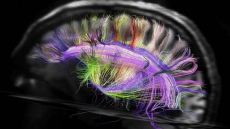Type 2 diabetes and cardio-vascular disease often occur together and scientists have now discovered that the two diseases may be related at the level of genes, proteins and fundamental physiology.
The study could lead to the common treatment for both diseases.
The two diseases share eight molecular pathways and several "key driver" genes appear to orchestrate the gene networks in which these pathways connect and interact, the findings showed.
"These (key driver) genes represent central network genes which, when perturbed, can potentially affect a large number of genes involved in the CVD (cardio-vascular) and T2D (Type 2 diabetes) pathways and thus exert stronger impact on diseases," said co-senior author Xia Yang of the University of California, Los Angeles in the US.
"We were able to derive novel mechanistic insights and identify potential therapeutic targets," the researchers added.
The researchers gathered genetic and health information from more than 15,000 women.
The scientists started by looking for individual genetic differences in women of three different ethnicities, who had either or both of the conditions compared to similar but healthy women - a technique called Genome Wide Association Study (GWAS).
But the team members did not stop there. They also analysed the women's genetic differences in the context of the complex pathways, where genes and their protein products interact to affect physiology and health.
In comparing women with cardio-vascular diseases and and Type 2 diabetes to healthy women, team found key differences in eight pathways regulating cell adhesion (how cells stick within tissues), calcium signalling (how cells communicate), axon guidance (how neurons find their paths to connect with target sites), extra-cellular matrix (structural support within tissue), and various forms of cardiomyopathy (heart muscle problems).
The study appeared in the journal Circulation: Cardiovascular Genetics.





